If you are still in the regulated electricity market (old PVPC), you should know that during each hour of the day the price of each kWh of consumption changes. Also, if you are a customer of a free market supplier, but you also have time bands with different prices, it is very important that you try to transfer all your consumption to the cheapest bands. For example, programming the washing machine or the dishwasher in the cheapest time slot will allow you to lower your bill by up to 30%. Next, we explain how you can see the daily consumption by hours in your home, and without having to install anything.
How to know in what hours I consume more light
In order to access the records of how much consumption we have made in our home, we must previously register on the official website of our distributor. Depending on the area of Spain where you are, you will have one distribution company or another. In the electricity bill we will always see the distribution company, depending on which one, we will have to go to a different web page enabled for this purpose:
In our case, our distributor is Iberdrola, so we will do the examples with this company. In the case of the rest of the distribution companies, the websites are very similar and we are going to obtain exactly the same information, so the most important thing is that you register and access to see the consumption every hour.
In the case of i-DE, we access the official website and the consumption made by hours of the previous day will appear, as well as the total consumption that we have made. Before you see the consumption graphs, we must tell you that we have solar panels installed, therefore, it is normal for consumption in daylight hours to be clearly lower than at night.
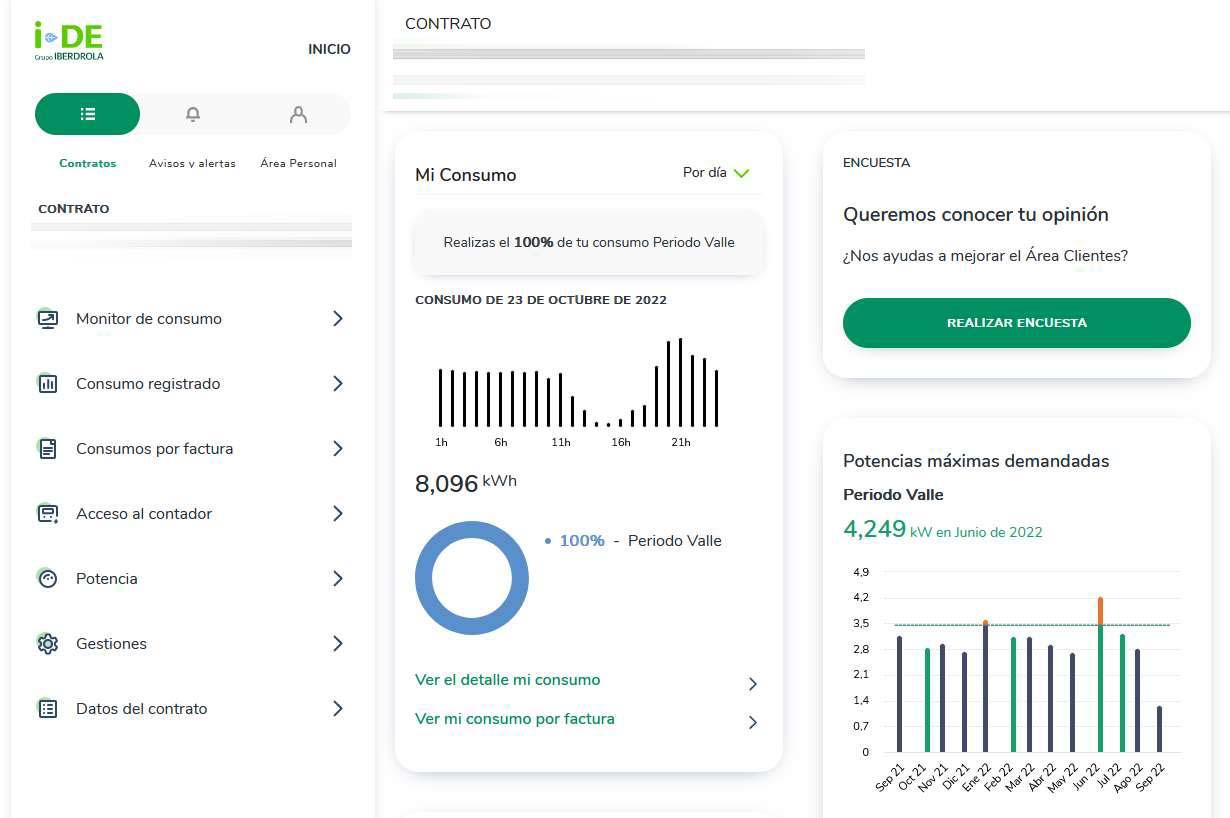
If we click on the “Registered Consumption” section we will be able to see the consumption of any day we want, and in addition, it will be reflected by the hour, as you can see in the following photo. In the menu we have the possibility of showing us the consumption by periods, that is, peak period, flat period and valley period. Considering that these periods are quite “blurred” judging by the price.
The most advisable thing if you have the regulated rate is to look at the prices per kWh at those times, and if you have a free market rate, keep in mind that it will always be cheaper at that time.
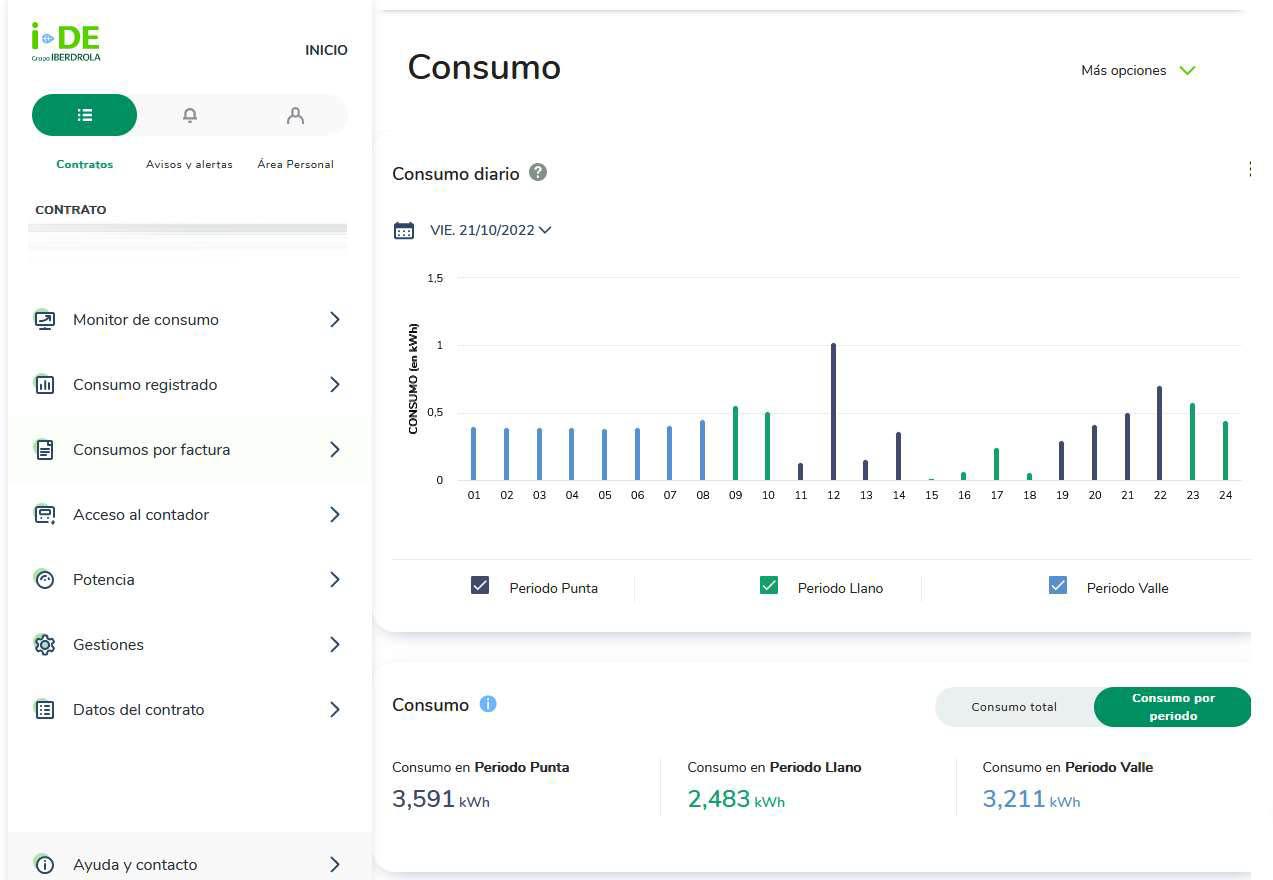
If we choose a holiday or weekend, we must bear in mind that the entire period is “valley”, as you can see here:
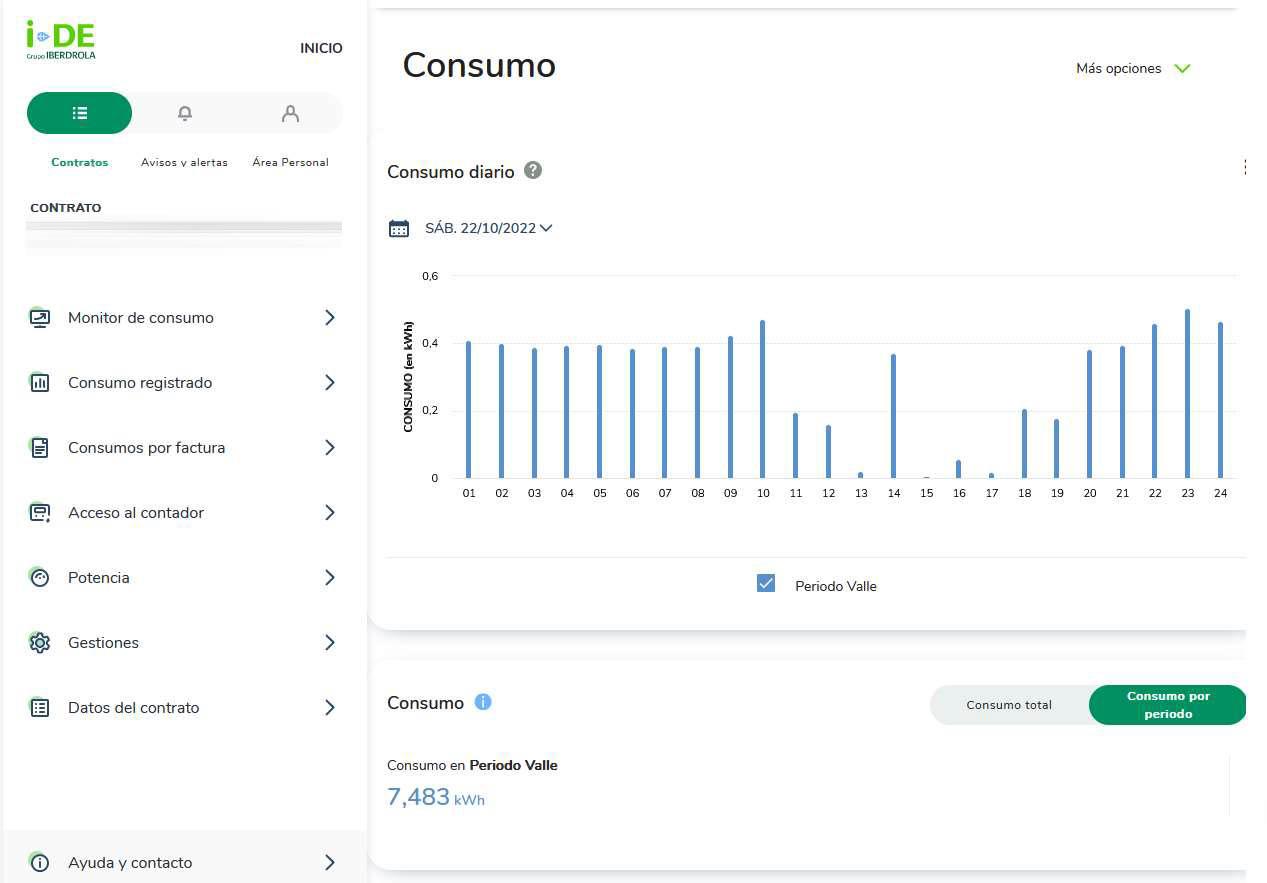
If we go to the filters section by day, week or month, we could also see a certain period of consumption to know in what hours we have consumed more or less energy.
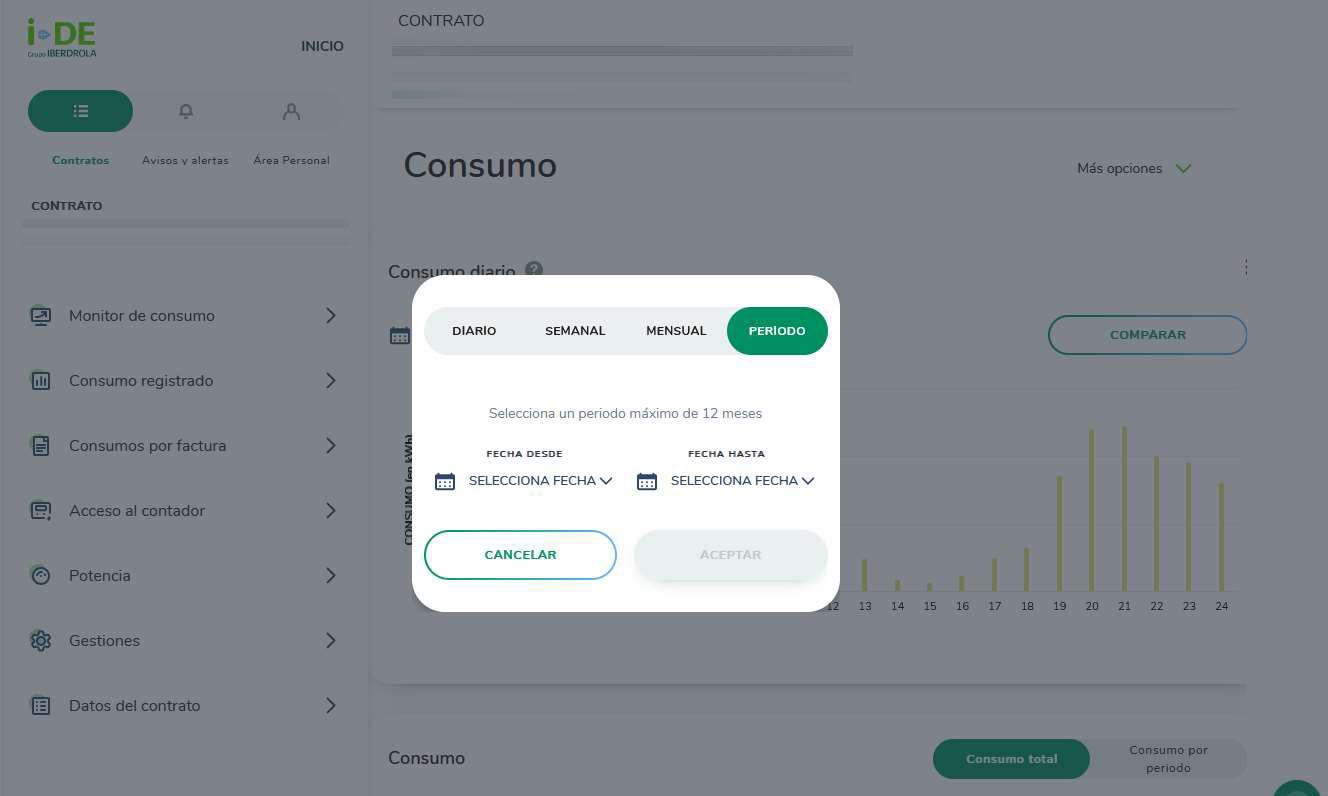
A very interesting feature is that we will be able to export this information in Excel and CSV format, although we could also export it in PDF format to see the hourly consumption graphs, as they appear on the distributor’s website.
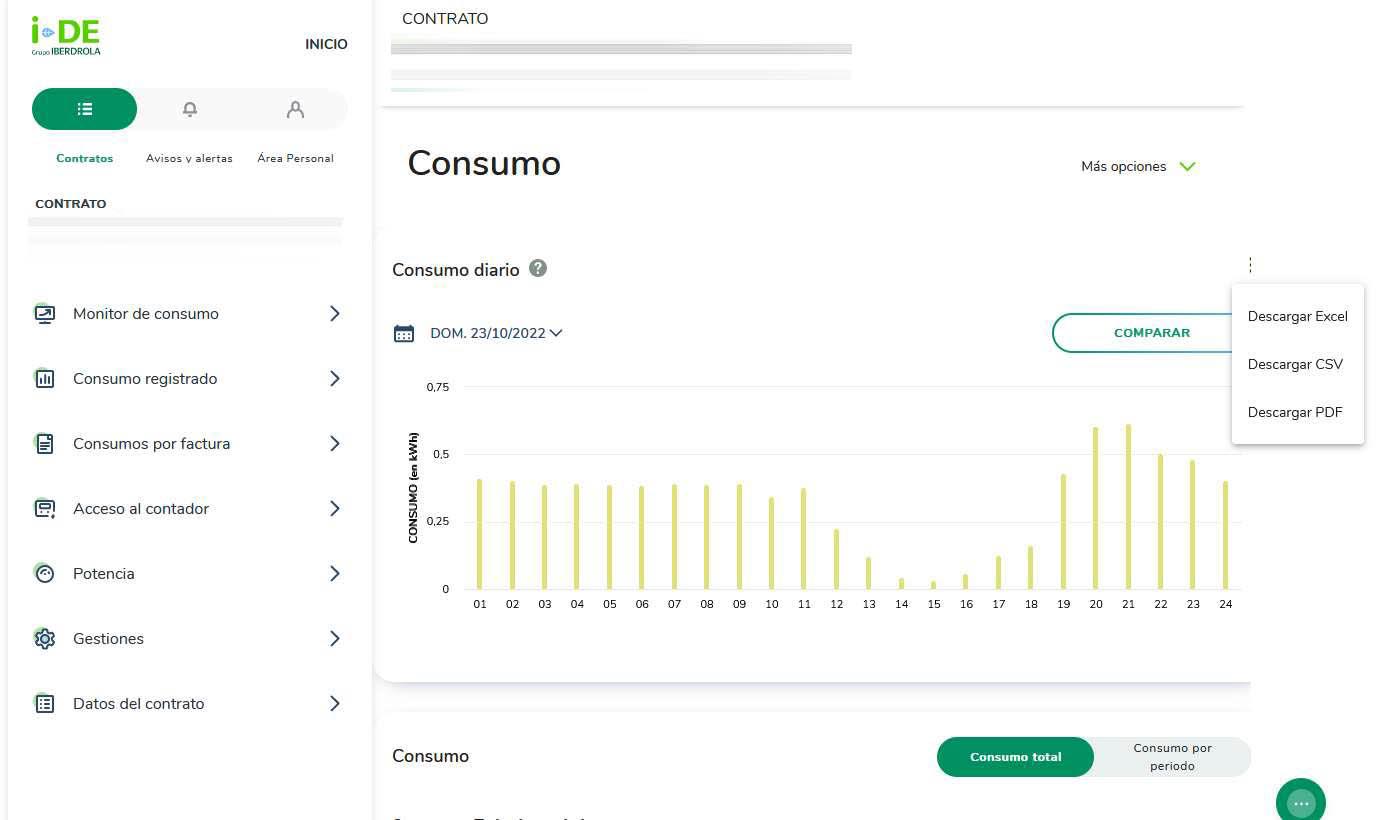
If you download the consumption in Excel format, you will be able to see this same information in different cells, so that you can prepare your own graphs as you wish, or to store it locally.
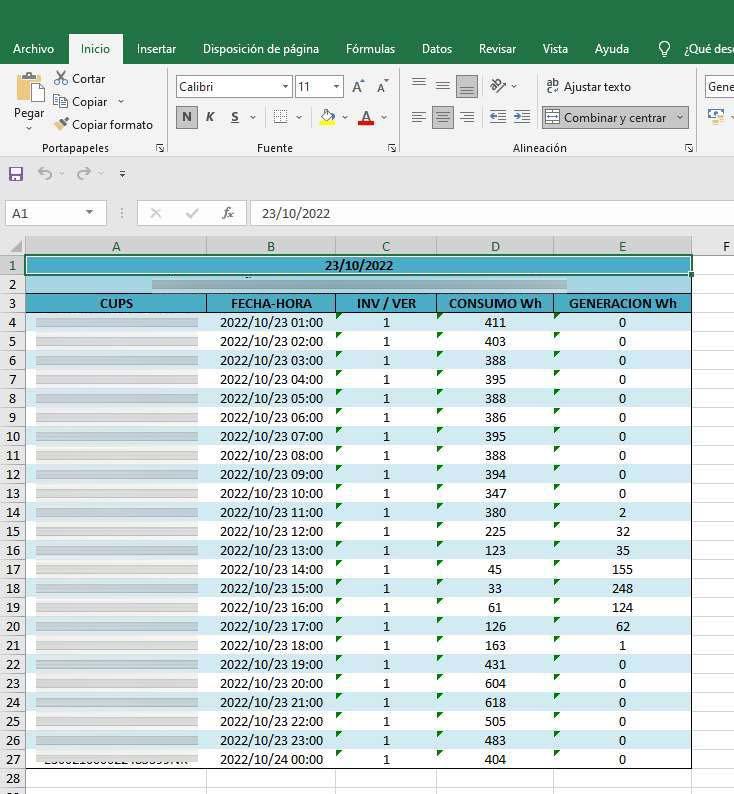
Finally, we also have the possibility of looking at the consumption per bill. This information is what the distributor sends to the marketer to proceed with the billing of electricity, this consumption per bill does not have to coincide with the calendar month, but it will help us to compare different bills and even compare with the simulator of the CNMC of the regulated rate, to find out if the free market is cheaper or more expensive than the regulated market.
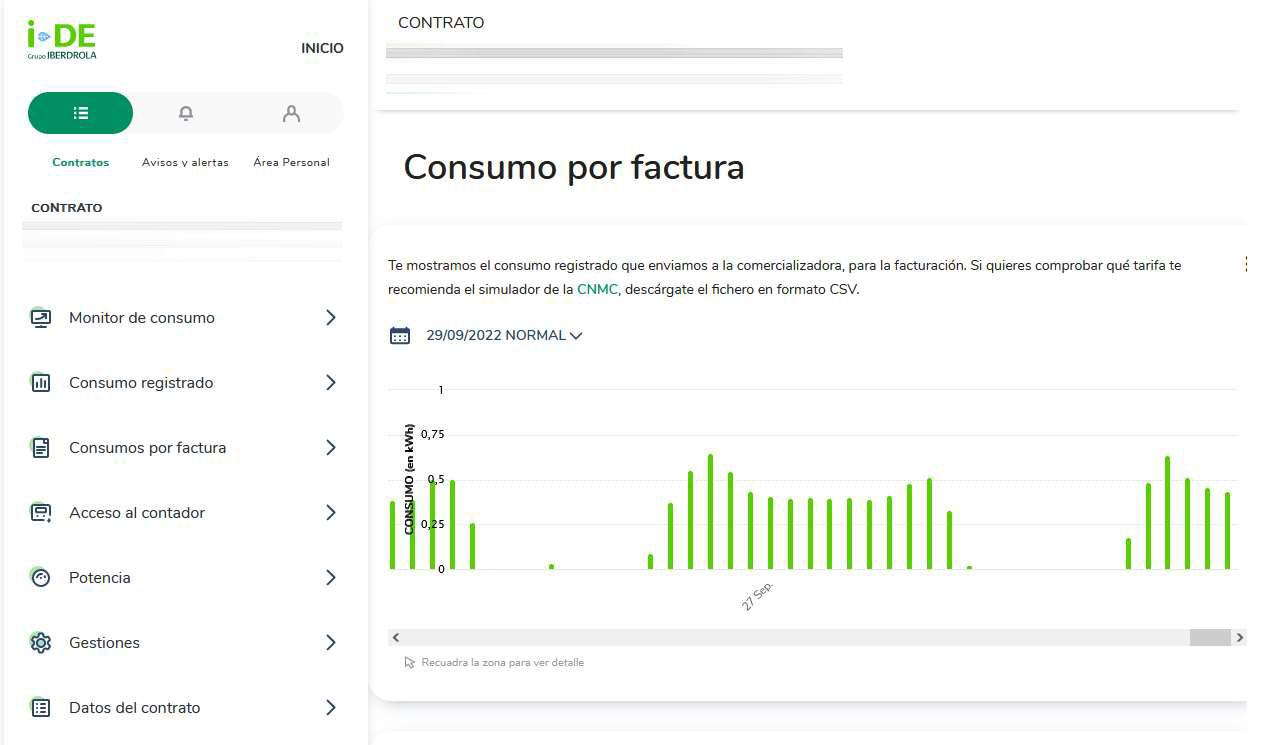
As you have seen, knowing in what hours we have a higher consumption or a lower consumption is very simple, to save what we must do is try to transfer all the consumption of cooking, put appliances such as dishwasher or washing machine in those hours that are cheaper . You must bear in mind that you should always put the “Eco” programs on the appliances to save both electricity and water, even if this makes the washing program last longer.













